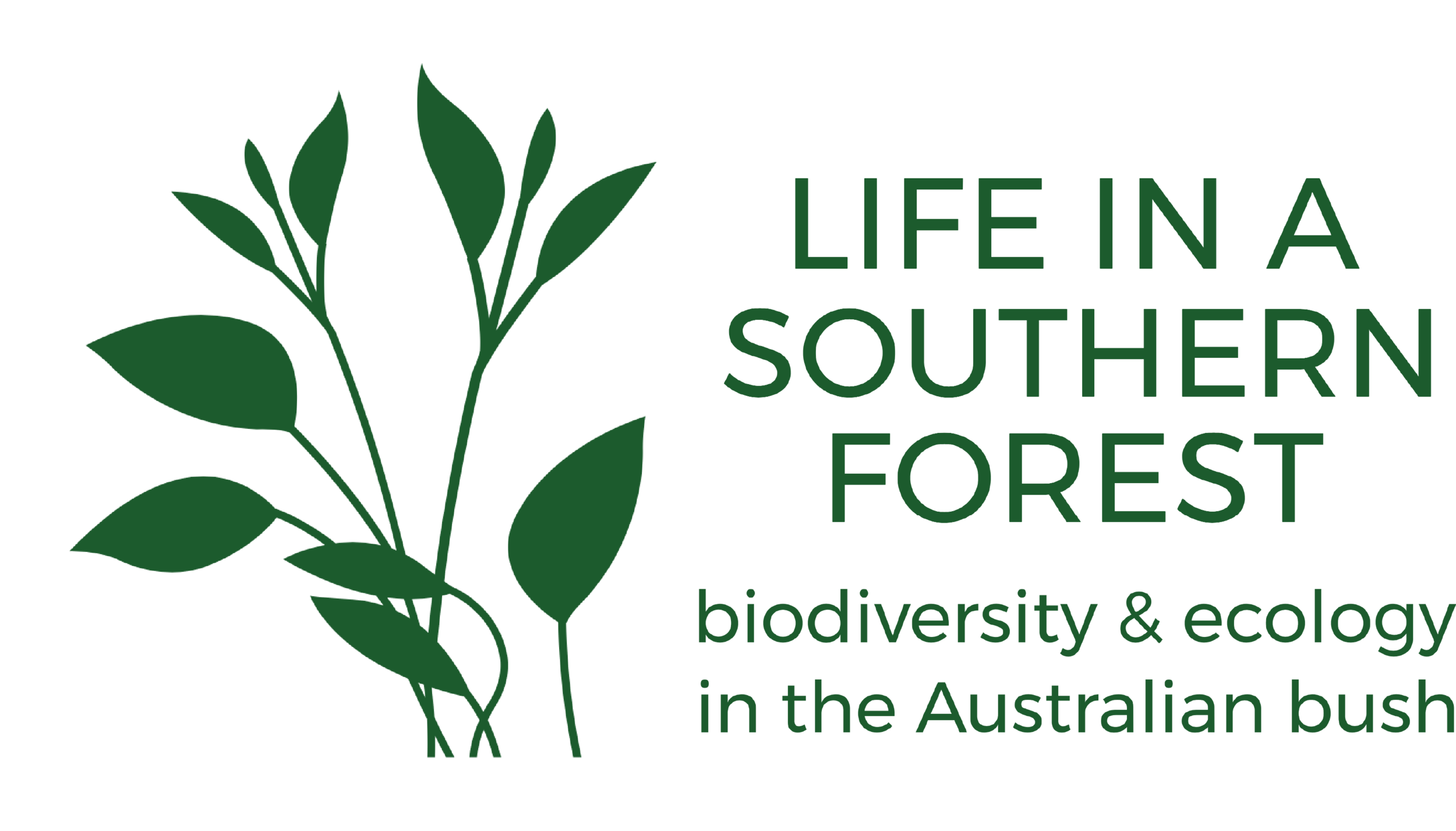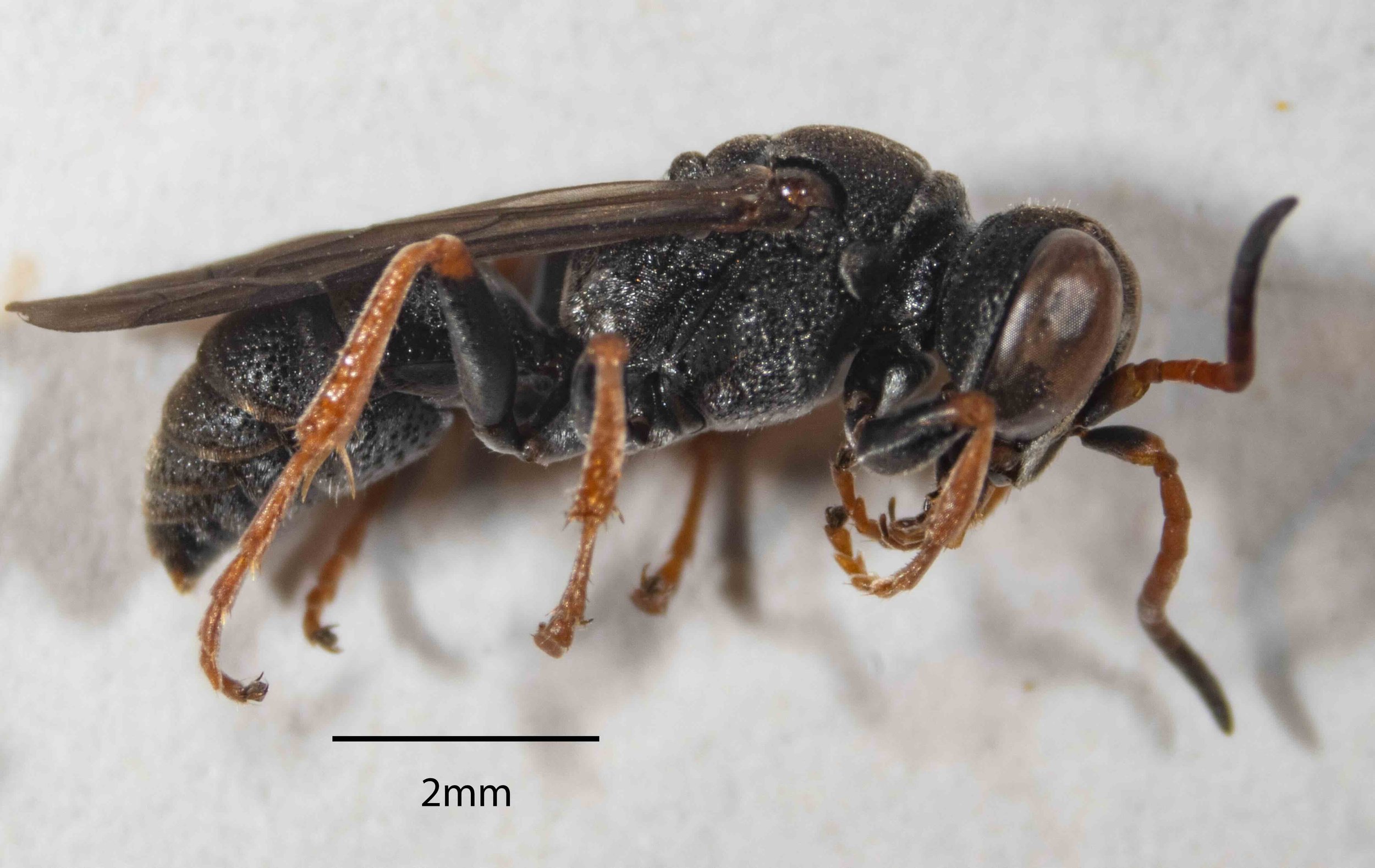
overall shape & size
Sphodrotes punctuosa males:
Differing from females in …
Smaller head-body length (8 – 10mm); longer antennae
Note also that, as in many crabronids, males have an additional flagellar segment (11, cf. 10 in females) and an additional visible segment in the gaster (7, cf. 6 in females).
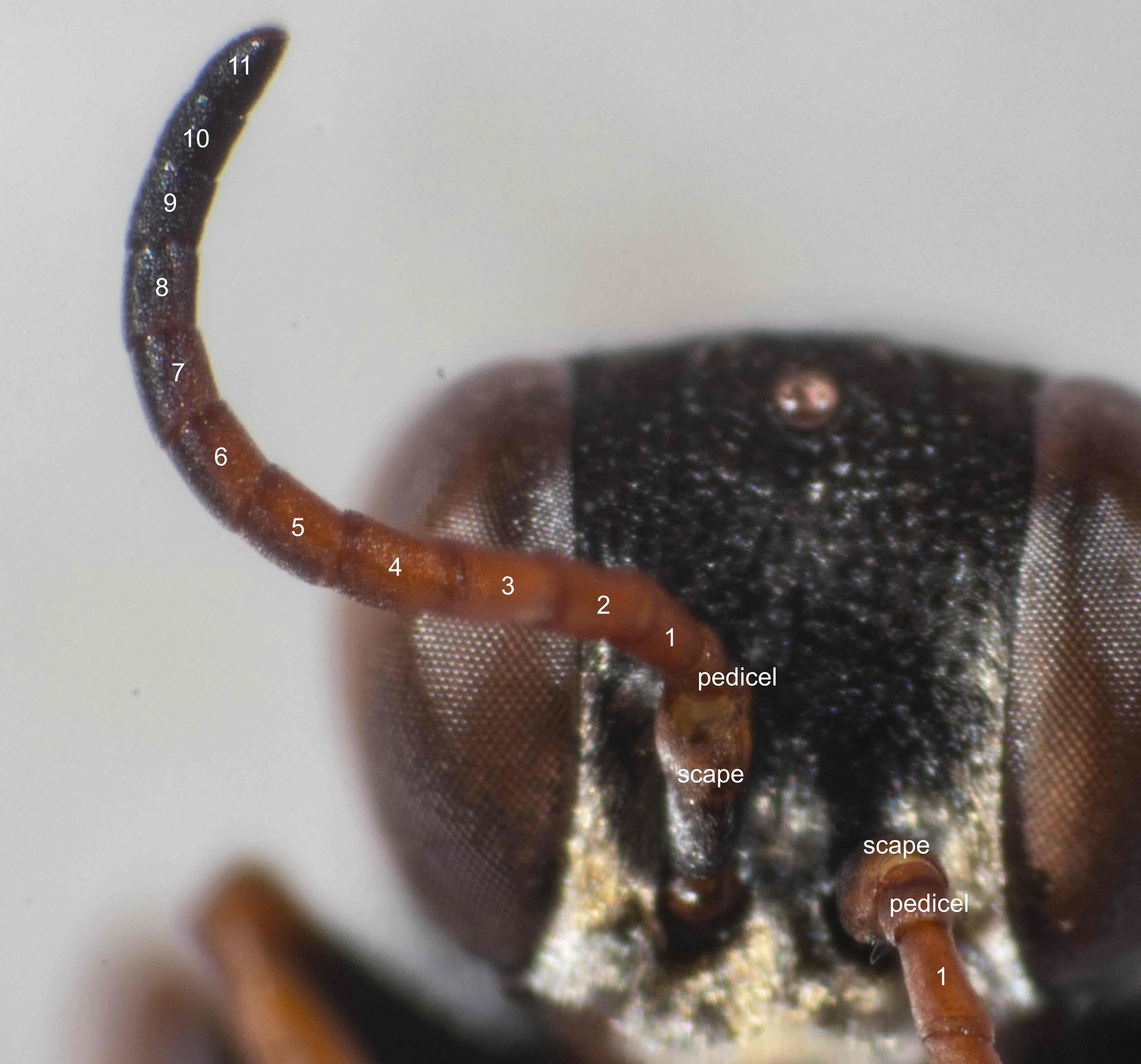
male antennae
As with nearly all members of the tribe Miscophini, male Sphodrotes have 11 antennal flagellomeres.
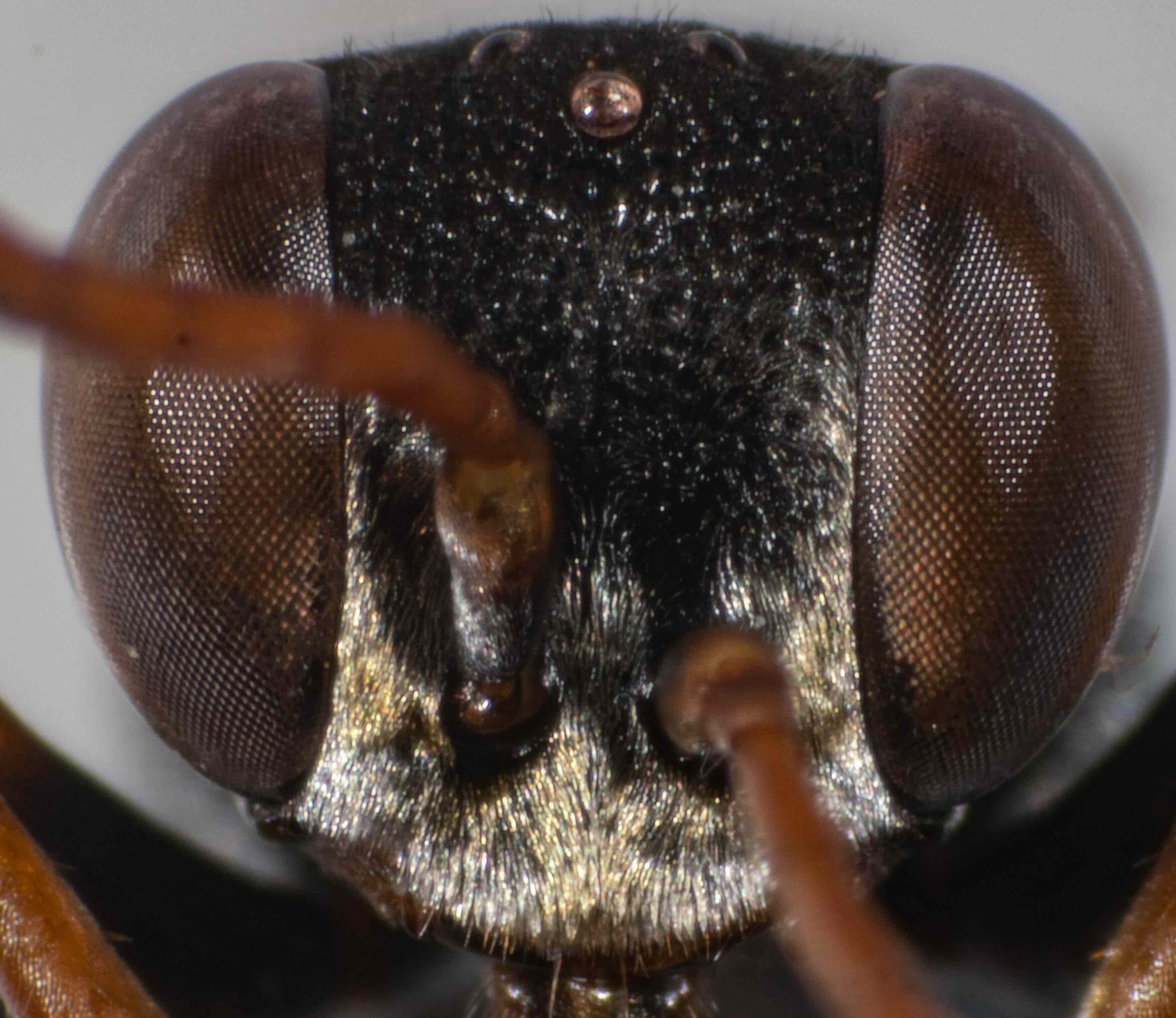
facial sculpture & pubescence
Sphodrotes punctuosa males:
Differing from females in …
“Punctation on frons much denser and stronger, interstices narrower, micropunctation finer. Frontal and clypeal pubescence much denser, brassy or slightly golden.”
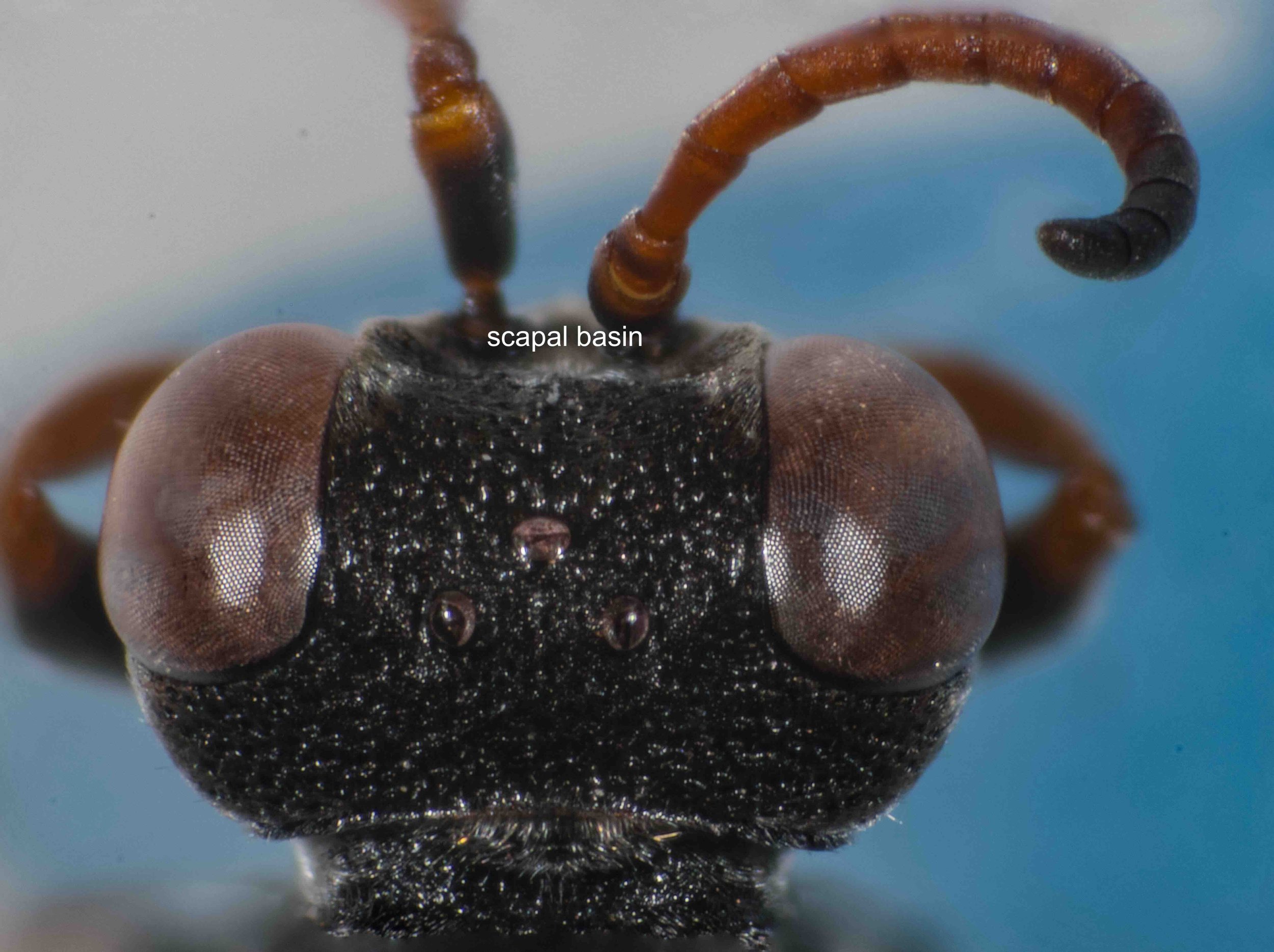
fovea & scapal basin; antennal colour
Sphodrotes punctuosa males:
Differing from females in …
“Facial foveae absent. Scapal basin deeper.” “Proximal flagellar segments light ferrugineous ventrally to quite light ferrugineous.”

thorax & propodeum
Sphodrotes punctuosa males:
Differing from females in …
“Thoracic, propodeal, and gastral sculture stronger and denser.”

thorax punctation
Sphodrotes punctuosa males:
Differing from females in …
“Thoracic, propodeal, and gastral sculture stronger and denser.”

first segment of gaster
Lomholdt makes no mention of male difference in the structure of SI.

gaster punctation
Sphodrotes punctuosa males:
Differing from females in …
"Thoracic, propodeal, and gastral sculture stronger and denser.”
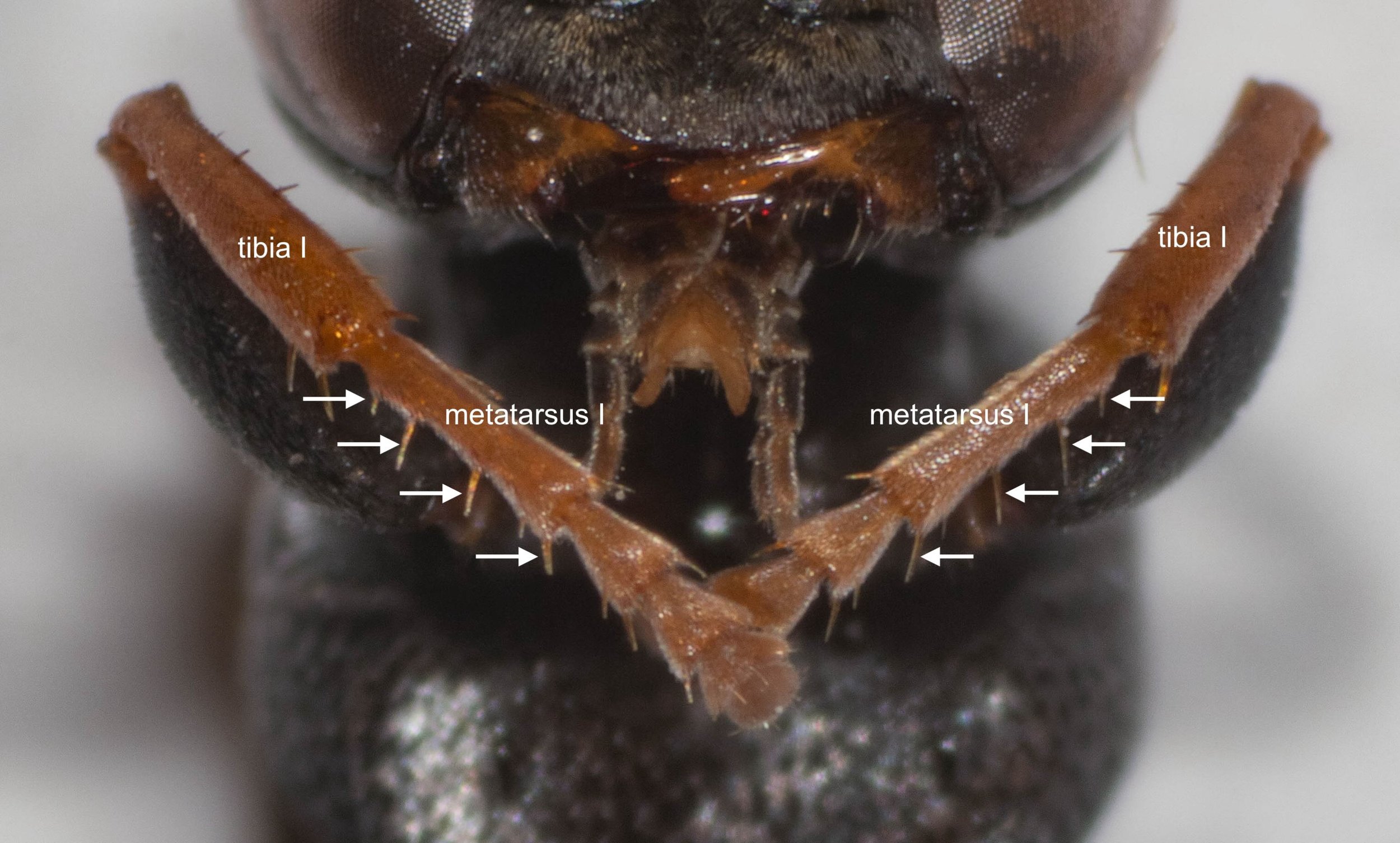
foreleg tarsal rake
Sphodrotes punctuosa males:
“Metatarsus I with 4-5 rake spines.”
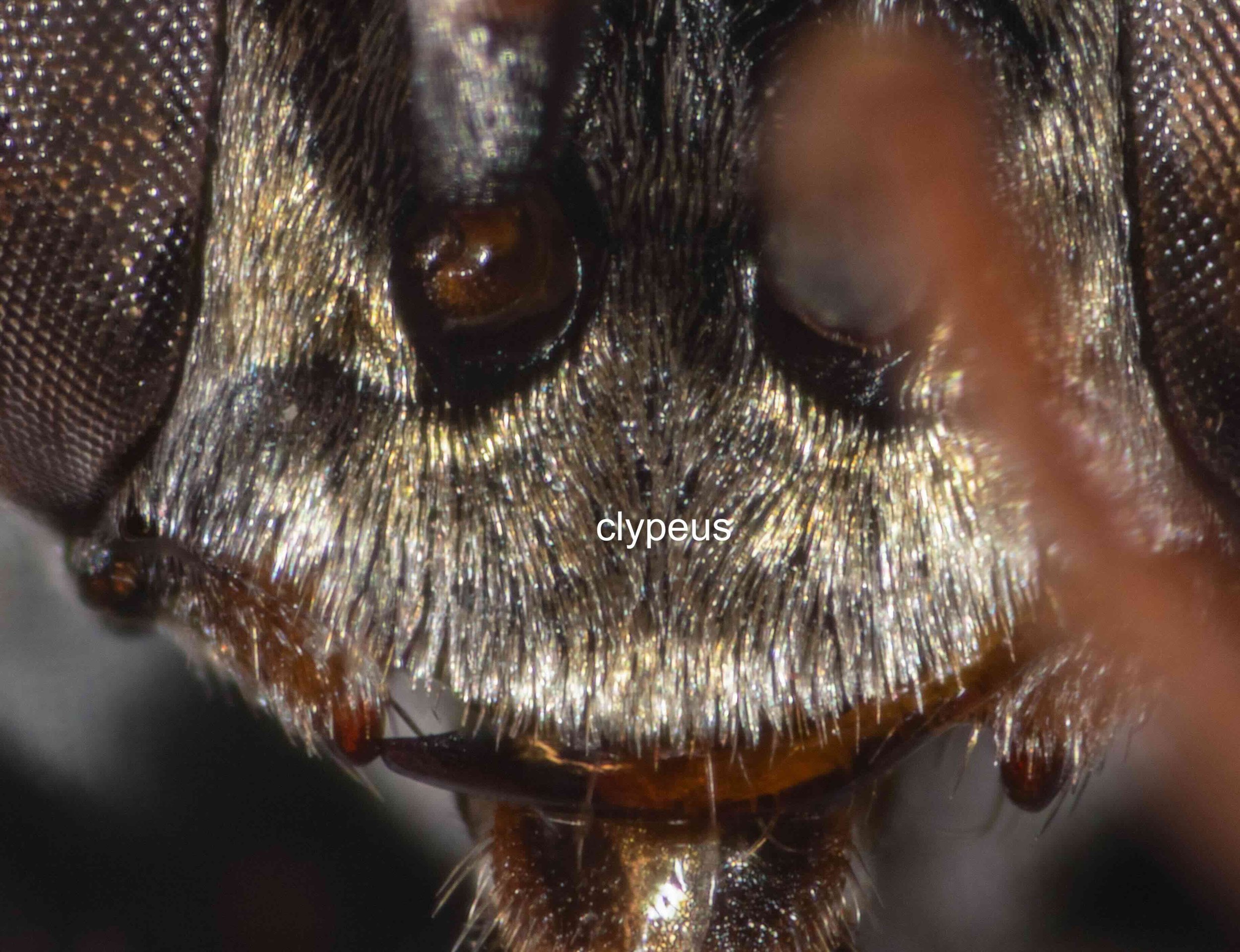
male clypeus (frontal view)
The dense pubescence conceals the apical rim of the clypeus when viewed face on.
[compare with Lomholdt’s Fig. 32]
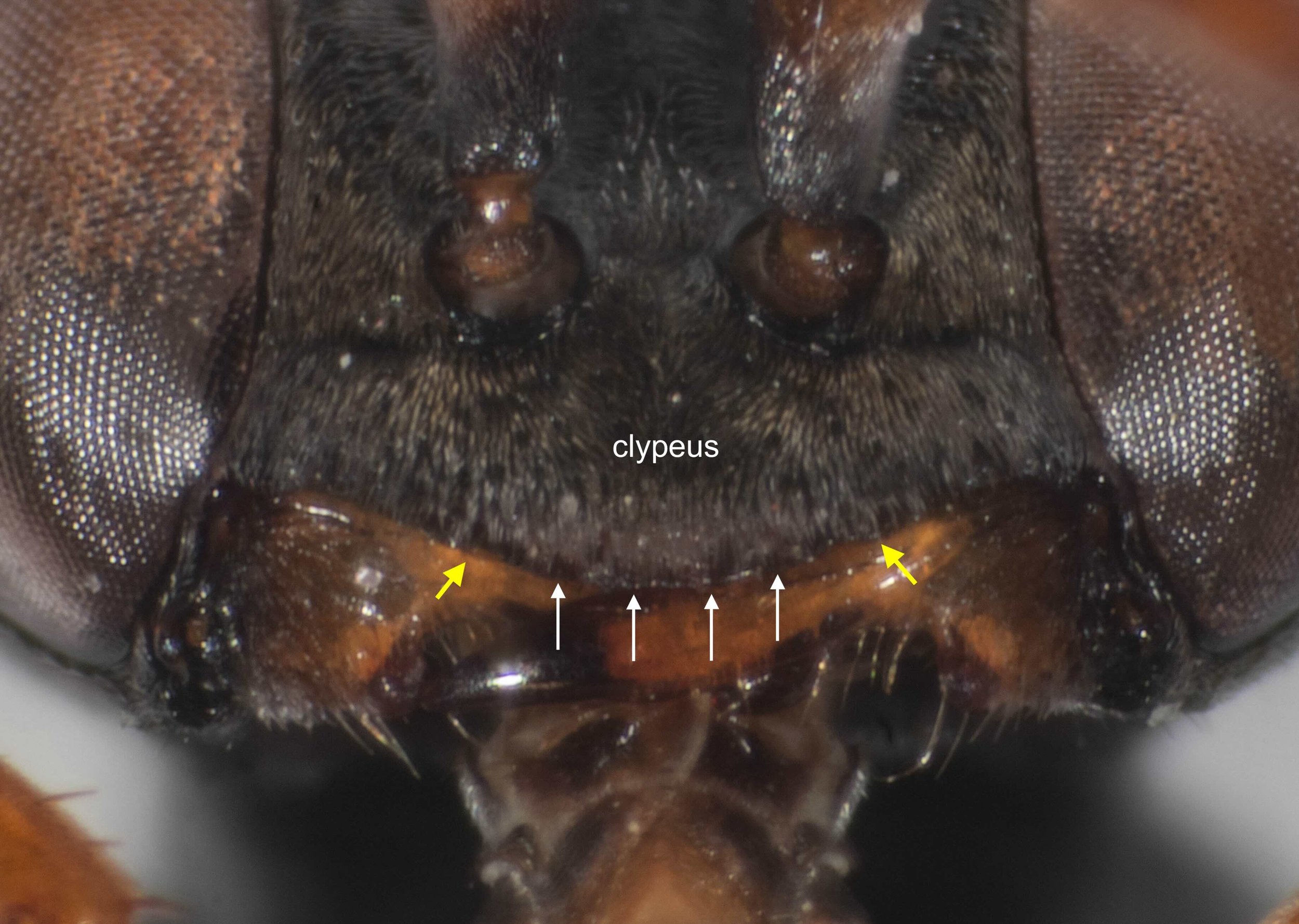
male clypeus (more ventral view)
The arrows indicate apical rim of the clypeus. There is a suggestion of a single, lateral tooth (thicker, yellow arrows), but it is not prominent as it is in the female.
[compare with Lomholdt’s Fig. 32]











